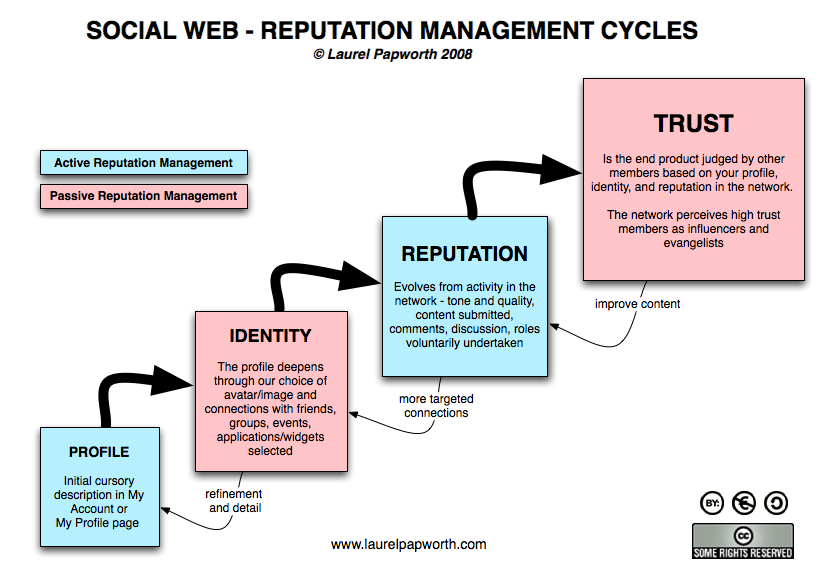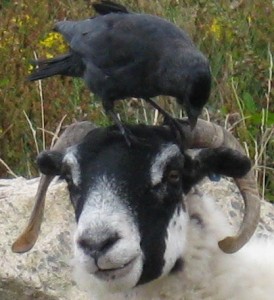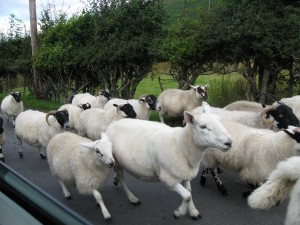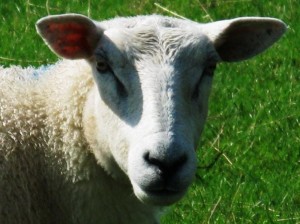Author Archives: Cynthia Peterson
Online Identity: Putting Yourself “Out There”
When thinking about the topic “Creating a visual presence in your own ‘little’ places on the web,” one area of concern I thought about was creating an online identity. The question I want to consider is this: How much of myself do I want to put ‘out there’ on the web? As a way of limiting the topic, I’m restricting my response to blogging.
When I began building the blog for this course, I started out thinking that I should strictly limit any personal information or even personality in my blog. I built a Voki avatar to use instead of using a photo of myself. I avoided using my name in the URL. My original posts were short and, I thought, to the point; in other words, really boring. Then I began to read blogs, and about blogs.
First I read Will Richardson’s book, Blogs, Wikis, Podcasts and Other Powerful Web Tools for Classroom Use. Richardson suggests that teachers create their own blogs and make them public.
Be a public blogger. Put your name on your work, but make sure you understand the ramifications of doing so. . . . Public writing demands discretion, especially in an educational setting. And remember too that what you write stays with you. Each post contributes to your online portfolio that may turn up in future Google searches (p. 45).
Hmm, yes – discretion. This reinforces that I should be careful what I put out there. The comment about “public writing” stayed with me. I came across that idea again in a blog entry by Doug Johnson titled How – the importance of conduct. Johnson blogs about Thomas Friedman’s review of Dov Seidman`s book How.
And Seidman’s book, Friedman writes, is about how one’s reputation in life is going “to get set in stone so much earlier.” It’s “a digital fingerprint that never gets erased” and that second chances will be harder to come by when your resume may play second fiddle to a Google search about you. That the only way to succeed is to get your how‘s right – how you live your life and how you conduct your business. And do it early in life.
Obviously I know that I have to be discreet about what I write in each page and post, but this article made me look carefully at what else I had put on my blog.
I love quotes, and was excited when I discovered that I could add a quote widget. However, I got rid of the first one I used, a widget called Quotes4All because a couple of the quotes were a little more suggestive than I was comfortable with. While I found them funny, I wouldn`t have shared them in a professional context at school, so I decided not to share them on my blog.
Laurel Papworth, an Australian consultant and lecturer about the social web, talks about how one`s reputation influences trust. While the post Laurel Papworth -Social Networks: Twitter: Reputation Management in Social Networks discusses Twitter, I think her model applies to blogs too.
The quick and dirty version:
We create a Profile (My Account) on a site, we make friends and add applications and groups and events to define Identity. We interact over time, offering content and comments and ratings which gains us a Reputation. That Reputation is then turned into a Trust factor – we decide how trustworthy a social network member is by the way they fill out their profile, by the connections they make, and by the content they submit, all of which is over time, which is why Social Media is a long term engagement.
She has posted this diagram on Flickr. Note she mentions choice of widgets under Identity!

As I continued my exploration for information about to identify myself in the blogosphere, I searched for blogs to add to my Bloglines account. I saw not only how the “experts” were crafting their entries, but how their personalities and some personal information were revealed. Will Richardson mentions his son, Tucker. Joyce Valenza`s very funny post My condo for a paper clip: or the effect of Kindle freeze on one particular vacationer shares some insights about her family and her foibles. Doug Johnson`s Blue Skunk Blog is frequently funny and personally revealing, as when he describes his ill-fated Alaska adventure.
I also found two excellent postings by Stephen Downes about how to create effective blogs. Both discuss the importance of establishing a clear identity. In Seven Habits of Highly Connected People, the seventh habit is Be Yourself.
The idea behind “being yourself” is not that you have some sort of offline life (though you may). Rather, it’s a recognition that your online life encompasses the many different facets of your life, and that it is important that these facets are all represented and work together.
In another post, How To Be Heard, Downes discusses many strategies for getting your blog read and taken seriously. In the section, Your Blog Is Your Identity, he suggests several ideas, including using your name in your URL, adding your blog address wherever you put your name, putting your blog address on your business cards and as part of your email signature, and makes this final point:
And don’t forget: put your name on your blog. Blog posts that cannot be attributed are much less likely to be cited by anyone (and if they’re not cited, they’re not read).
I`m not ashamed to admit that I really knew nothing about establishing online identity in my blog. How have I changed it as a result of my reading and reflection?
- I`ve used my name in the URL.
- I`ve added some humour (hopefully).
- I used my own photo instead of an avatar.
- I added personal information (my love for Scotland), and used some photos I took there.
- I`ve worked on developing a distinct and personal voice in my blog entries.
I know I have a lot to learn about personal online identity on the web, but at least now I know that I didn`t know!
Changing My Practice — Some Early Thoughts
I can’t sleep. I’m feeling a little rushed — trying not to get trampled in the rush of blog rolls, RSS feeds, Facebook updates, and so on and so on. I read Doug Johnson’s Blue Skunk Blog today, and his post “Your source for humor?” resonated with me. Instead of tossing and turning, I’ve decided to take stock. Johnson talks about the fact that humour is a great motivator, attention-getter, and stress reliever. I couldn’t agree more — hence the photo of the sheep stampede above.
Having a laugh gave me a chance to catch my breath and think more about how some of Richardson’s suggested used for blogs in the classroom could apply to my library. I am very proud of the library web site I created for M.E. LaZerte High School. It is a combination of web links and pathfinders and online learning structures for a wide range of curricula. But it could be so much better.
I do love the assignment we created for Steinbeck’s novel, Of Mice and Men. Students were asked to collect materials on the Great Depression, and they visited the New Deal Network to view photographs and read accounts of people who lived during the Depression. They then created a collage based on the material they found. How powerful it would be to have students blog this material. I can imagine the rich discourse that would result as groups looked at the material other groups had found, and were able to reflect and comment on it.
I am hoping that, even though I am retired, I can go back to school and work with my good friend Kathryn Cook on reworking this assignment.
And now I think I can sleep.
School-wide Web 2.0?
Want to feel intimidated about Web 2.0? Be sure to read David Warlick’s article “A Day in the Life of Web 2.0.” Although it was written almost two years ago, it certainly presents a vision of a school-wide (and indeed system-wide) philosophy and effective use of technology that is light years away from my high school.
In the last chapter of his book, Blogs, Wikis, Podcasts and Other Powerful Web Tools for Classrooms, Will Richardson illustrates one teacher using all of the tools discussed in the previous chapters. “Epilogue: The Classroom of the Read/Write Web” shows an English teacher’s use of Web 2.0 tools to enhance teaching and learning.
Warlick’s article goes further. In this vision every teacher in the school uses various 2.0 tools to facilitate teaching and learning, including blogs, wikis, podcasts, social bookmarking, and more. This technology helps infuse the school and the school system with a culture of sharing and collaboration that includes teachers, students, administrators, and parents. Even the superintendent of schools is in constant touch with what’s happening in his schools as a result of effective use of 2.0 technology.
While I do find Warlick’s vision intimidating, I am also inspired. My favorite part of the article is the description of the role of the teacher librarian, who, along with the school tech facilitator, subscribes to all the teachers’ weekly blog reports that summarize all that will be taught. The t-l and tech facilitator map all the curricula that are being taught in the school each week. They then research various resources and strategies to share with teachers and students.
I wonder if there is a school district where this vision has become a reality. I love the possibilities this vision suggests to me.
Blogging on Web 2.0 for schools . . .
My name is Cynthia Peterson. After 38 years of teaching (23 as a teacher librarian in junior high and high school), I’ve retired — sort of. Through the University of Alberta’s Teacher-Librarianship by Distance Learning program, I am presently working on a M. Ed. in School Librarianship, something I’ve long wanted to do, but with home and work responsibilities, never had time for.
This blog is part of my classwork for EDES 501, Exploration of Web 2.0 for Teaching and Learning, taught by Joanne de Groot. Although I’ve created very simple blogs and wikis before, I am definitely lacking expertise with Web 2.0.
In his book Blogs, Wikis, Podcasts and Other Powerful Web Tools for Classrooms, Will Richardson zeroes in on what I’m lacking. He describes teachers who “have taken the work they had students do in the paper, analog world and simply digitized it” (p. 8). That probably describes about 75% of the work I’ve been collaborating on with my colleagues. Now I have the opportunity to use this blog as my tool to construct my own learning.
I decided to use Edublogs for this blog, as it comes highly recommended by colleagues, and it is ad-free. As I hope to be using this with teachers and students, I want to be sure I am really familiar with it. I have already discovered that the instructions leave something to be desired!
I felt quite sheepish when it took me four hours to figure out how to upload a Word document! I would have expected to be easy, given that this is designed for teachers to use with their students. I plan to create some Edublog tutorials of my own later.
I am also hoping that it will not generate the spam email I got when I used other programs. I have found it rather “glitchy” but perhaps that is is my lack of expertise.
Here’s to new challenges!
About This Blog

On the Isle of Arran, a crow finds a friendly sheep. I identify with the crow. I too am looking for those useful bits to keep me going.
In my case it’s useful bits of information about Web 2.0, ideas and strategies and applications that will make teaching and learning more effective, especially in high school.
My strength as a teacher librarian has always been collaboration, and to me that is the beauty of Web 2.0 apps — they make collaboration an intrinsic part of the process of learning. I’m looking forward to sharing what I learn with my favorite flock!
Because I love Scotland, and have hundreds of photos my husband and I have taken there, you’ll find bits of Scotland scattered through my posts. You’re welcome here, and I hope you’ll join me on my journey round the web.


